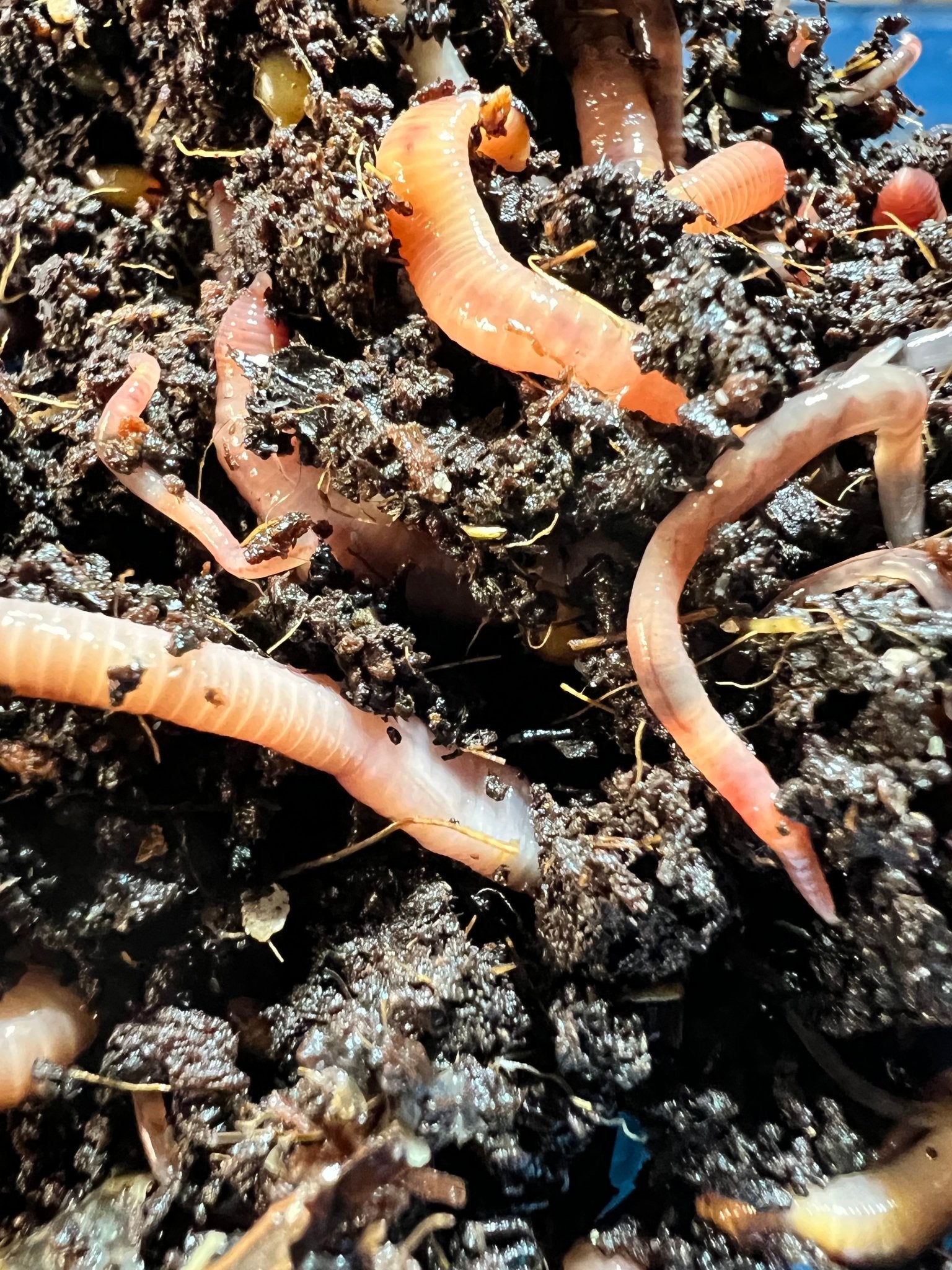How Red Wigglers Can Transform Your Composting Experience
The integration of red wigglers into composting practices supplies a transformative strategy to squander management and soil enrichment. Understanding the specific requirements and advantages connected with keeping a thriving worm populace is vital for maximizing their possibility.
Advantages of Red Wigglers
Red wigglers, medically called Eisenia fetida, are a cornerstone of effective composting systems as a result of their impressive capability to decompose raw material effectively. These worms stand out in transforming kitchen scraps, yard waste, and various other natural materials right into nutrient-rich garden compost, typically described as worm castings. Lake Hickory Bait. This process not just decreases landfill waste but likewise contributes to sustainable horticulture methods
Among the key benefits of red wigglers is their high recreation rate, enabling them to populate a composting environment promptly. This rapid multiplication enhances disintegration rates, resulting in faster compost production. In addition, red wigglers prosper in a varied series of problems, making them versatile to various composting setups.

Setting Up Your Worm Bin
(Charlotte NC Worms For Sale)To produce an effective worm bin for composting, cautious interest should be provided to its layout and setting. A perfect worm bin should be built of products that are sturdy yet permit necessary air flow, such as plastic or timber. The dimension of the container can differ, however a volume of around 1 square foot per extra pound of worms is a great beginning point.
Make sure that the bin has drain holes to avoid water accumulation, which can bring about anaerobic conditions harmful to the worms. Additionally, incorporating air flow openings will aid preserve correct humidity degrees and oxygen flow.
Following, it is necessary to give bed linens for the worms, which can include shredded newspaper, cardboard, or coconut coir. This bedding not just uses an environment for the worms but also aids in dampness retention.
Placement the worm bin in a place that preserves a temperature level array of 55-77 ° F(13-25 ° C) to optimize worm task. Avoid putting the bin in direct sunlight or extreme temperatures. By following these standards, you can create a favorable setting for red wigglers, improving the effectiveness of your composting process.
What to Feed Your Worms

(Hickory NC Worms For Sale)Red wigglers especially delight in soft, damp foods like watermelon skins, cucumber peels, and banana peels. Nonetheless, it is vital to stay clear of feeding them citrus fruits, onions, and garlic, as these can be detrimental to their well-being. In addition, prepared foods, milk items, and meat should be strictly stayed clear of, as they can bring about odors and attract pests.
To preserve optimal conditions, it's a good idea to chop bigger scraps right into smaller sized items, facilitating quicker decomposition. Start by presenting small amounts of food and monitor the worms' usage rate; change accordingly to avoid overfeeding, which can create an unhealthy atmosphere. Supplying a consistent feeding timetable will help maintain your worm population growing while enhancing the general performance of your composting initiatives. By comprehending what to feed your worms, you lay the groundwork for a successful and sustainable composting experience.
Maintaining a Healthy Habitat
Producing a prospering composting environment for red wigglers requires interest to their habitat, as it straight influences their health and productivity. The excellent environment must keep you could try these out a balanced moisture degree, usually in between 60-70%. Too much moisture can bring about anaerobic problems, while insufficient moisture might dehydrate the worms.

The bedding product in the compost must vary and shredded, incorporating products like cardboard, paper, and coconut coir. This not just gives a comfy atmosphere but also acts as a food source. Lake Hickory Bait. Consistently examining for smells or signs of insects can help identify possible concerns prior to they rise
Lastly, preserving a balanced pH level, preferably in between 6 and 7, ensures a favorable environment for red wigglers, promoting their capacity to procedure raw material effectively. By dealing with these factors, you can develop a lasting and efficient composting ecosystem.
Harvesting and Utilizing Compost
Gathering compost from a worm container is a gratifying procedure that changes organic waste into nutrient-rich product for gardens and plants. This can be done making use of techniques such as the "light" method, where worms are drawn in to light and can be scooped away from the leading layers, or by relocating the garden compost to one side of the bin and adding fresh bedding to the various other side, urging the worms to move.
When the worms are gotten rid of, the staying compost can be sorted to remove any type of bigger fragments or undecomposed material. The end product needs to have a dark, brittle appearance and a pleasant natural smell, showing that it awaits usage. This rich garden compost can be applied directly to yard beds, blended into potting dirt, or utilized as a leading dressing for potted plants. By integrating vermicompost right into your gardening methods, you not just boost dirt fertility yet additionally promote healthy plant growth and lasting horticulture techniques.
Conclusion
Incorporating red wigglers into composting practices considerably improves the disintegration procedure and adds to the manufacturing of nutrient-rich vermicompost. Their adaptability to different environments and high reproduction prices guarantee a sustainable population, which properly damages down natural matter. The resulting worm spreadings boost soil framework, fertility, and microbial task, eventually promoting healthier plant development. For that reason, the assimilation of red wigglers into composting not only maximizes waste monitoring however also improves yard communities.